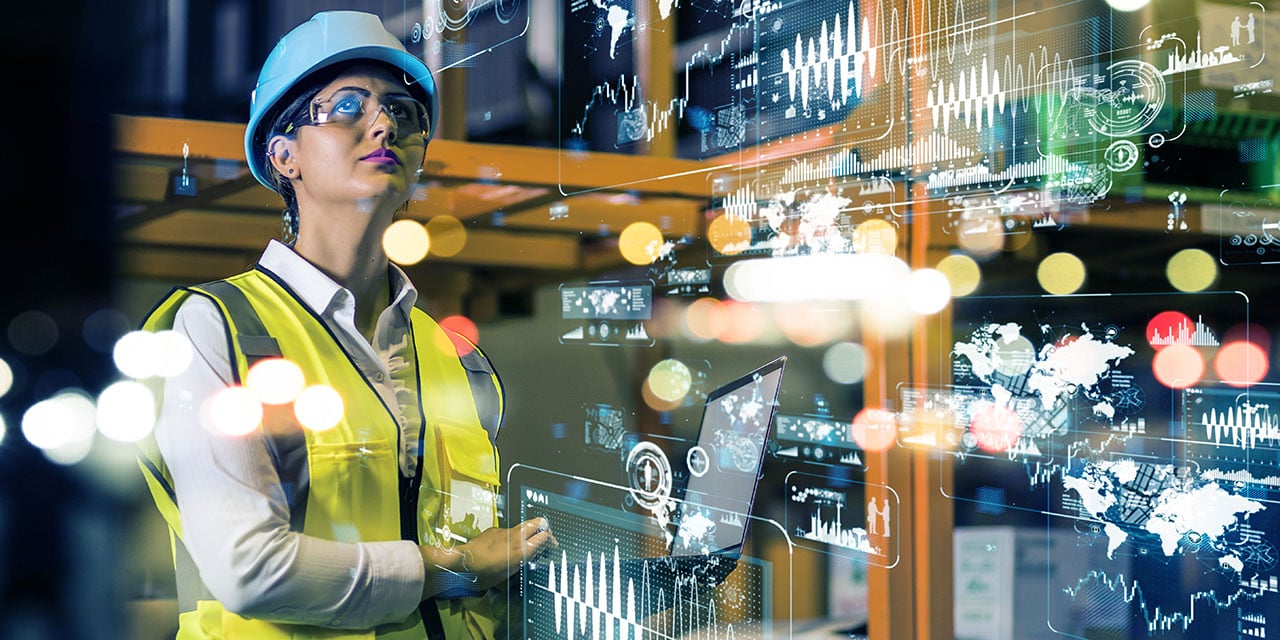
Transforming Workplace Safety with the "Internet of Things"
From drone fleets and autonomous transportation systems to ‘smart homes’ with computer-controlled lighting, heating, media and security systems, a new group of highly-automated technologies is gripping popular imagination. These technologies – made possible by the Internet of Things (IoT) – form advanced ecosystems of interrelated devices with the capacity to monitor, detect, communicate and act in real time independently of human intervention. Promising to fulfill all of our wildest technological dreams and needs, the age of IoT has arrived – and it looks like it’s here to stay.
While the consumer applications of IoT tend to receive the most attention, one area that is seeing strong growth in the uptake of IoT enabled devices is workplace safety. Workplace safety costs businesses billions every year, and industries with hazardous working environments – such as Construction, Oil & Gas, Mining, Utilities, Rail, among others – are beginning to adopt these technologies to help minimize risk and address preventable threats. Before exploring these IoT solutions, however, let us first consider some of the key threats faced by workers in these industries.
Construction is one of the world’s most dangerous occupations, accounting for 1 in 5 worker deaths in the US and incurring tens of thousands of short and long-term injuries each year. The most common accident is falling from a height, which accounts for 26 percent of fatal injuries in the workplace. Additional risks come from being struck by vehicles and heavy moving objects, proximity to overhead/underground high voltage power lines, confined spaces, high noise environments, and exposure to dust and fumes.
Other industries are often faced with some combination of the above, or similar, threats. In the Rail sector, for instance, there is high risk from collisions with vehicles, objects and machinery and vulnerability to electric shock. In Utilities, the number one risk is slips, trips and falls, accounting for 30 percent of Lost Workday Injuries (LWIs) in 2016. In Oil & Gas extraction, exposure to flammable gas, chemical emissions and oxygen-deficient atmospheres creates vulnerability to explosions and chemical poisoning.
What then is being done to tackle these threats? In a high-tech world, many safety measures currently in use – hardhats, earplugs, gloves, gas masks, guardrails, harnesses, protective goggles and high visibility clothing – have been in use a long time. While these measures are still fundamental in minimizing risk, companies have now started to integrate IoT technologies to enhance their application. These technologies bring together real-time analytics, machine learning, advanced sensors and embedded systems to offer a number of key functionalities:
Physiological monitoring:
Wearable technology can be used to monitor a worker’s physiological state in real-time. Japanese wearable tech company Mitsufuji is active in this space, creating smart clothes woven from silver-metalized fibers that collect a range of data about its wearer, including heart rate and body temperature. Other examples include wristbands with bio-sensors to accurately measure stress levels and glasses that detect eye movements to identify fatigue and periods of micro-sleep.
Environmental monitoring:
Sensors used to measure temperature, radiation, gas leaks, carbon monoxide and other harmful chemicals can automatically alert workers to unsafe external conditions. Additionally, visual imaging software can map 3D representations of a worker’s environment, facilitating effective two-way communication between supervisors and personnel in the field, allowing for remote guidance technologies to provide live assistance to endangered workers (e.g. guiding a trapped miner out of a tunnel).
Situational awareness, training and behavioral data:
Augmented Reality (AR) technologies offer new ways to support decision making in the field by providing holographic representations of physical equipment, while Virtual Reality (VR) technologies offer immersive situational training without the risks associated with real-life procedures. These technologies also offer up valuable behavioral data, which can be used to gauge a worker’s risk tolerance level and alertness in response to incidents.
Proximity detection:
Proximity detection systems utilize wearable sensors to monitor workers’ locations, map their movements, and alert them to nearby hazards. One example of this is radio-frequency identification (RFIDs), which can measure a worker’s proximity to moving equipment and alert them to possible collisions and near misses. Another piece of kit is the ‘smart helmet’, which can immediately detect an accident, determine the worker’s location and send an alert containing coordinates to a safety control center. The center can make video and audio contact and communicate with the worker until help arrives.
Exoskeletons:
Exoskeletons can assist with heavy lifting and the prevention of musculoskeletal disorders (MSDs) by analyzing worker movements and providing the necessary support. The Chairless Chair, for example, used by factory floor workers, fixes around the back and legs to provide support whenever the worker sits or crouches. Exoskeletons are also used to monitor worker movements, identifying repetitive movements and sustained periods of overexertion.
Together, these IoT innovations are helping to improve workplace safety on multiple fronts. Firstly, they are preventative. By closely monitoring one’s environment — both internal and external — IoT technologies can pre-empt and alert workers to potential dangers. Secondly, they are responsive. In the case of an accident, IoT technologies can alert supervisors and help coordinate a quick and effective response. Thirdly, they are informative. By accumulating and analyzing rich pools of data, IoT technologies can help optimize work in the field and find improved ways to limit risk.
Baird Capital's Investment Approach
At Baird Capital, we are seeking to make investments in high-quality businesses that are developing technologies that improve safety in the workplace. With our global capabilities and deep sector experience, we believe we are well-positioned to help differentiated and growing companies in the sector, particularly those with international ambitions. If you would like to discuss investment opportunities in relation to any industrial technology business with strong secular drivers and international growth aspirations, please contact any of the team members on this page.

